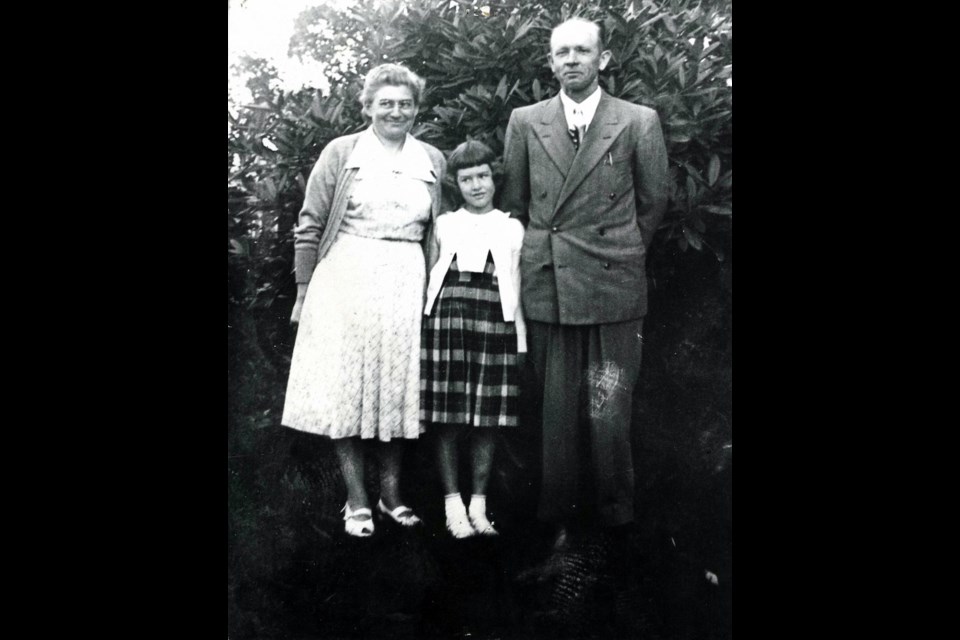On June 10, 1958, David Pauls, 52 was shot three times in the head with a .22-calibre revolver by the back door of the family home. The killer then went upstairs and clubbed 11-year-old Dorothy Pauls to death in her bed. When Helen Pauls, 45, returned from work a short time later the killer shot her twice in the head and then beat her dead body with a blunt instrument.
It was Vancouver’s first triple homicide.
The Pauls were originally from Russia, spoke German, and before moving to South Vancouver in 1953, farmed in Aldergrove. David worked as a janitor for Woodwards, and in a period where most mothers stayed at home, Helen worked the afternoon shift at the Home Fancy Sausage Shop on East Hastings Street. Dorothy attended Walter Moberly Elementary School.
No one knew much about the Pauls, but that’s not surprising. They had stopped attending the local Mennonite Church after David no longer wanted to tithe a percentage of his earnings. They still farmed most weekends. Neighbours and co-workers described them as hard working, frugal, financially sound and having no known enemies of any kind.
The only clues police had to go on were a partial footprint in the garden, a bloody, but unidentifiable palm print on the bedroom wall, and a dislodged rock in the garden that indicated the way the killer had fled. The murder weapon was never found, but forensics determined that the bullets came from a Rohm RG-10 Revolver. Another dead end, as the guns sold in stores throughout the US for $14.95.
Police investigated several theories in the Pauls murders including connections to Russia, the Mennonite Church and a communist plot. A botched robbery and a potential home invasion were also ruled out because nothing was stolen. Another theory was mistaken identity. The Pauls had bought the house the year before from a Vancouver Police Department sergeant who was the same age as David and lived there with his wife and young daughter. Police believed that David may have caught a peeping tom looking through Dorothy’s window.
Police found a chalked inscription that said DP-HT scribbled on the back door. It turned out that HT was a boy at Dorothy’s elementary school that she had a crush on, but he had an alibi. Another HT—an 18 year old boy from Mission, BC and who four days later raped and murdered a woman and sexually assaulted an 11-year-old girl in Bellingham, was also cleared.
When the Pauls case was reinvestigated again in the 1990s by the Provincial Unsolved Homicide Unit, the theory was that because Dorothy was found with her head wrapped in her robe and wearing just her pajama top that she was the intended target of a sexual assault and the adults became collateral damage.
There were no suspects identified and the murder weapons were never found. The $14,000 reward—the largest ever posted—went uncollected and the murders remain unsolved.
- For more information see: Cold Case Canada podcast: The Pauls
Eve Lazarus is a reporter and author, and she hosts and produces the Cold Case Canada true crime podcast. Her books include the B.C. bestsellers Murder by Milkshake; Blood, Sweat, and Fear; Cold Case Vancouver and Vancouver Exposed: Searching for the City’s Hidden History. She blogs at Every Place has a Story.



